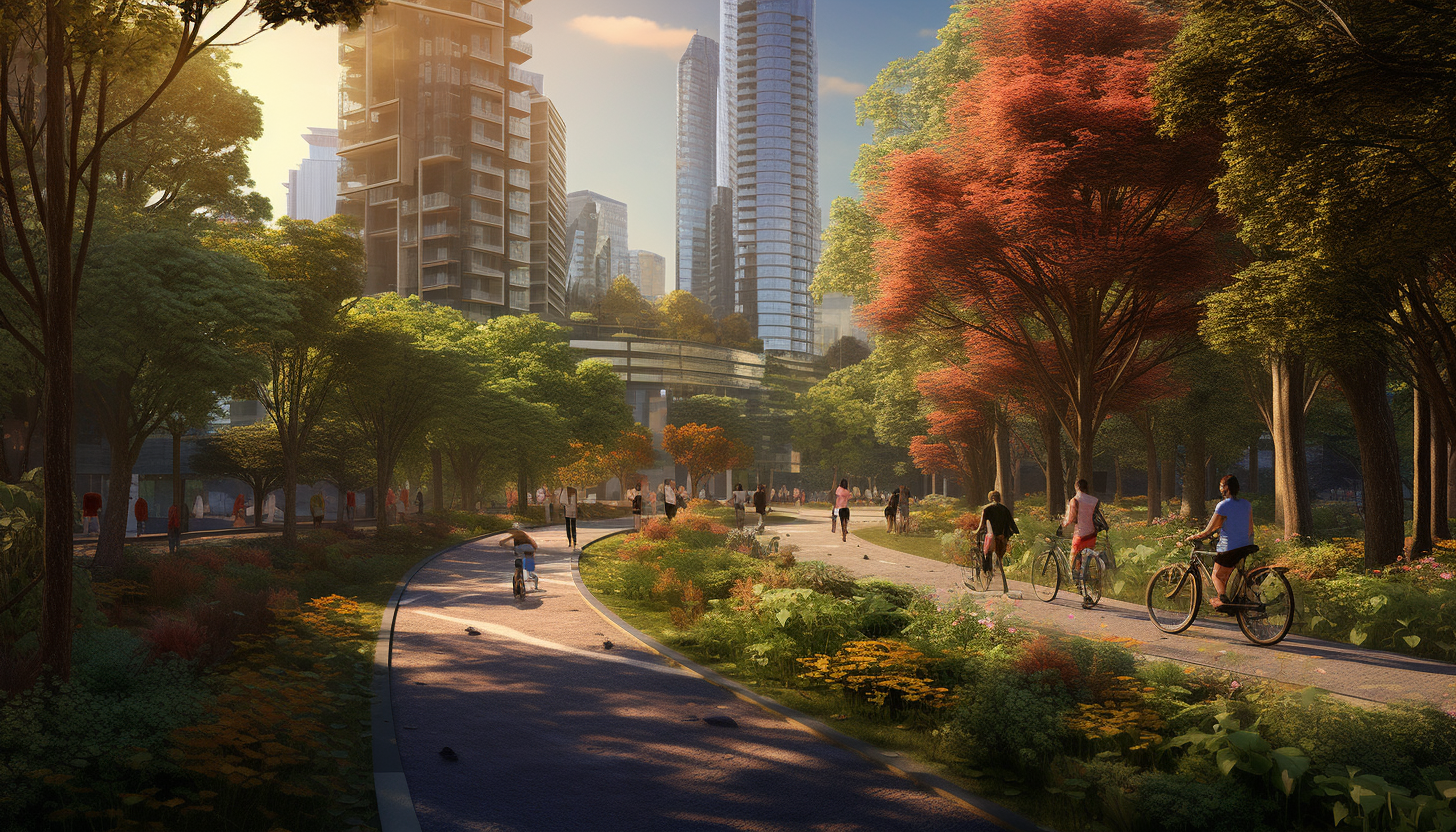Yearning for pedestrian-friendly exploration?
A report identifies the world’s most walkable cities, including London, Paris, Bogotá, and Hong Kong. Remarkably, London surpasses nearly 1,000 global cities in terms of proximity to car-free spaces, accessibility to schools and healthcare, and the brevity of journeys.
According to researchers at the Institute for Transportation and Development Policy (ITDP), walkable cities are crucial for enhancing health, reducing climate-damaging emissions, and fostering robust local communities. Despite these benefits, the study finds that few cities prioritize pedestrians, often overshadowed by car dominance.
Notably, only Bogotá ranks in the top five across three key walkability measures, while U.S. cities lag due to urban sprawl. The report underscores the value of car-free places such as parks and pedestrianized areas in improving health, community bonds, and pedestrian safety.
Criteria for Determining the Most Walkable Cities
A city becomes walkable when you can comfortably get from one place to another without the need for a vehicle. It’s about creating spaces where people can walk for leisure, shopping, work, or exercise. But what exactly makes a city walkable?
Closeness to Car-Free Places, Healthcare, Education, and Small City Blocks
In a walkable city, you’ll find areas free from cars, and close to healthcare and education facilities. These places foster community and make daily life convenient. Small city blocks create a more intimate urban environment, which also adds to a city’s walkability.
Top 5 Major Cities by Closeness to Car-Free Places (within 100m)
Cars have their place, but imagine strolling down a street where only the sound of chatter, laughter, and footsteps fill the air. Car-free zones make this possible. It’s a wonderful experience, offering cleaner air and a more relaxed ambiance. It’s a unique joy that more cities are adopting.
#1. Hong Kong, China: With its narrow streets and bustling markets, Hong Kong offers plenty of car-free areas to explore.
#2. Moscow, Russia: Moscow’s pedestrian zones are lively and offer many cultural experiences.
#3. Paris, France: The city of love invites you to stroll along its car-free riversides and alleys.
#4. Bogotá, Colombia: Known for Ciclovía, a weekly event that transforms roads into pedestrian paths.
#5. London, UK: London’s car-free days and areas like Covent Garden make for delightful exploration.
Top 5 Major Cities by Closeness to Healthcare & Education (within 1km)
Having schools and hospitals nearby means less travel time, and it builds a sense of community. Here are cities that excel in this aspect.
#1. Paris, France: Known for its extensive healthcare network and world-class educational institutions.
#2. Lima, Peru: With numerous clinics and schools within reach, Lima’s urban planning prioritizes people’s needs.
#3. London, UK: London’s NHS and educational system make vital services easily accessible.
#4. Santiago, Chile: Santiago’s efficient public transport system further enhances accessibility.
#5. Bogotá, Colombia: Bogotá focuses on integrating essential services within its urban layout.
Top Five Major Cities by Small Size of City Blocks
Smaller city blocks foster intimacy, making the streets more engaging and friendly. These cities have mastered it:
#1. Khartoum, Sudan: A historic city with an intriguing maze of small blocks.
#2. Bogotá, Colombia: Bogotá’s charming neighborhoods are shaped by its small and vibrant city blocks.
#3. Lima, Peru: Lima’s architectural design encourages community interaction.
#4. Karachi, Pakistan: Karachi’s diverse neighborhoods offer a rich cultural experience.
#5. Tokyo, Japan: Tokyo’s compact design has become an urban planning inspiration.
Tips for Exploring the Most Walkable Cities in the World
- Discovering Hidden Gems: Walking allows you to uncover those tucked-away treasures that are missed when driving.
- Staying Safe While Walking: Be aware of traffic rules and always prioritize safety when exploring on foot.
Essential Gear for Urban Exploration
Dressing right makes walking enjoyable. Comfortable shoes, a hat for the sun, or a raincoat for unexpected showers will ensure a wonderful walking experience.
Conclusion
The report from the Institute for Transportation and Development Policy paints a compelling picture of the importance of walkable cities in today’s world.
Cities like London, Paris, Bogotá, and Hong Kong are leading the way, demonstrating that accessibility to car-free spaces, healthcare, and education can foster healthier and more connected communities. Bogotá’s success across all measures serves as an inspiring example that other cities can follow.
Meanwhile, the lack of prioritization for pedestrians in many cities, particularly in the U.S., signals a missed opportunity to cut emissions and enhance urban life.
The findings underline a global need to shift urban planning towards creating more walkable, environmentally friendly, and community-oriented spaces. It’s a call to action for cities around the world to reimagine their landscapes, putting people first, and cars second.
Explore and rank cities to discover your next relocation destination using our handy tool: The Nomad Index.

Leave a Reply